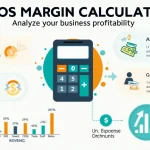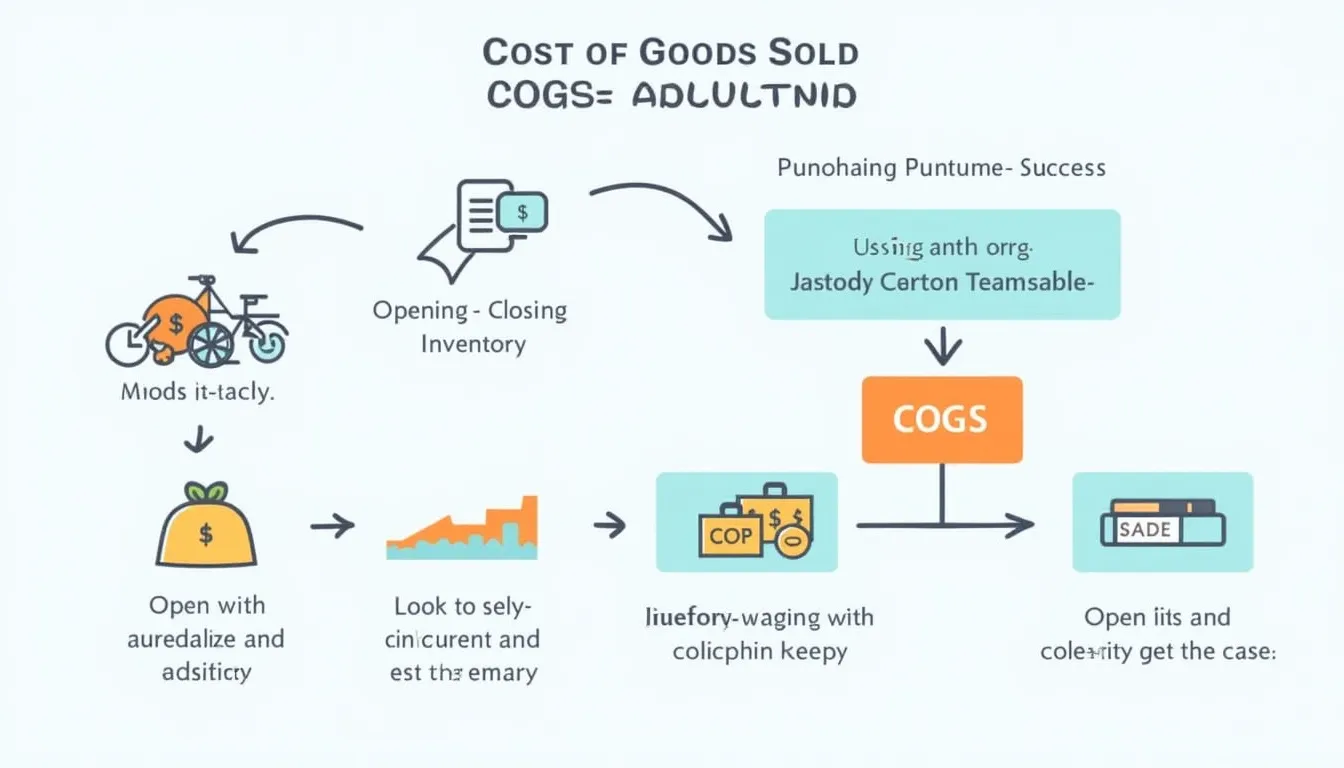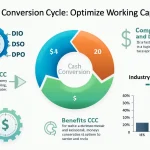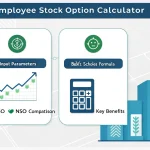COGS Calculator
Is this tool helpful?
How to use the tool
- Beginning Inventory – type what your stock cost at the period start. Examples: 14 250 or 62 700.
- Purchases during the Period – add all inventory buys in the same period. Examples: 8 900 or 38 300.
- Ending Inventory – enter stock value at period end. Examples: 10 600 or 27 500.
- Total Revenue (optional) – include sales to see gross profit. Examples: 31 000 or 91 400.
Formulas the script uses
COGS and gross profit rely on two straightforward equations:
$$ COGS = \text{Beginning Inventory} + \text{Purchases} – \text{Ending Inventory} $$ $$ Gross\;Profit = \text{Total Revenue} – COGS $$Worked examples
- Scenario A: 15 000 + 6 500 – 12 000 = 9 500 COGS; 30 000 – 9 500 = 20 500 gross profit.
- Scenario B: 42 000 + 38 000 – 27 000 = 53 000 COGS; 90 000 – 53 000 = 37 000 gross profit.
Quick-Facts
- COGS appears on every GAAP income statement (FASB ASC 330, 2021).
- IRS Publication 538 requires annual COGS disclosure for inventories (IRS Pub. 538, 2023).
- Average U.S. retail gross margin is 37 %—implying 63 % COGS (U.S. Census Retail Trade Report 2022).
- Inventory turnover above 6× signals healthy stock management (Gartner Supply Chain Metrics, 2023).
What is Cost of Goods Sold?
COGS is the direct expense of producing goods you sold during a period, including material, labor and allocated overhead (FASB ASC 330, 2021).
Why does COGS matter?
COGS directly reduces revenue; lower COGS raises gross profit and taxable income accuracy (IRS Pub. 538, 2023).
Extra metrics you can derive
- Gross Profit Margin: rac{Total Revenue – COGS}{Total Revenue} × 100 %.
- Inventory Turnover Ratio: rac{COGS}{(Beginning Inventory + Ending Inventory)/2}.
“COGS is the single biggest expense for most product companies.”
—Harvard Business Review, “Managing the Bottom Line,” 2020.
How do I handle negative inventory values?
Negative numbers indicate data entry errors or shrinkage; correct records before calculating, per IRS audit guidance (IRS Pub. 583, 2023).
Can service firms use this calculator?
Yes—treat direct service costs (labor, materials) as “inventory” to gauge job profitability (SBA Financial Management Guide 2022).
How often should I recalculate COGS?
Monthly calculations reveal seasonal trends and support rolling forecasts (McKinsey Quarterly, 2021).
What range signals efficient inventory turnover?
Retailers target 6-12 turns annually; lower rates tie up cash, higher rates risk stock-outs (Gartner Supply Chain Metrics, 2023).
Does COGS affect pricing strategy?
Yes—pricing above COGS plus target margin assures profit while staying competitive (Harvard Business Review, 2020).
Important Disclaimer
The calculations, results, and content provided by our tools are not guaranteed to be accurate, complete, or reliable. Users are responsible for verifying and interpreting the results. Our content and tools may contain errors, biases, or inconsistencies. Do not enter personal data, sensitive information, or personally identifiable information in our web forms or tools. Such data entry violates our terms of service and may result in unauthorized disclosure to third parties. We reserve the right to save inputs and outputs from our tools for the purposes of error debugging, bias identification, and performance improvement. External companies providing AI models used in our tools may also save and process data in accordance with their own policies. By using our tools, you consent to this data collection and processing. We reserve the right to limit the usage of our tools based on current usability factors.







